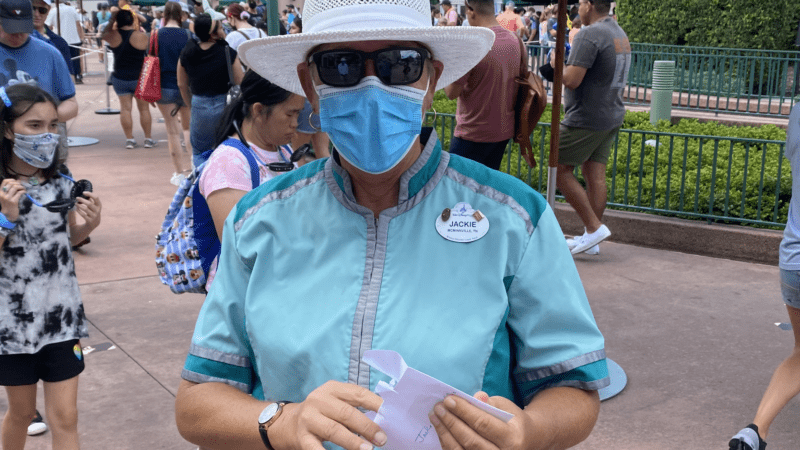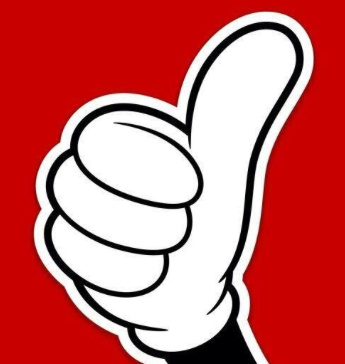Why Learn & Benchmark From Disney?

A Context For This Podcast
We welcome you to Disney at Work, dedicated to bringing you best practices from Disney that you can apply to your own organization.
You can find our podcast here on Podbean, iTunes, Spotify, MyTuner, and ListenNotes.
This post and podcast is based on an opinion piece written by a guest blogger. The title of the post was “The Disneyfication of a University”. It’s based on a substantial sum of money that the President of GWU, George Washington University allowed in having the Disney Institute bring their programming to the university. While I want to address both sides of this post, I really want to address why any organization would want to learn and benchmark from the Walt Disney Company.
Three things from the outstart:
- I am unabashedly a Disney fan. Have been all my life. Not pretending otherwise. I am expressive about it.

- I am also expressive of what doesn’t work. It’s why clients often come to me over Disney Institute, because I can be honest about what’s working and what’s not. Disney is a great company. But it’s an imperfect one. And one can learn enormously from both ends of that spectrum. It also helps that I’m a small consulting firm with little overhead, which keeps my clients from having to spend millions to get those insights.
- I am formerly with Disney Institute. I created programming for clients, facilitated those programs, and dealt with real clients in the public, private and non-profit arena. I left Disney years ago and eventually started my own organization, Performance Journeys. I then went on and started another organization, World Class Benchmarking along with a former Disney Institute partner, Mark David Jones. Our belief is not only could we provide better insights in benchmarking Disney, but we could also provide benchmarks that studied other great organizations such as Ritz-Carlton, Nordstrom, Jet Blue and Harley Davidson. We have done that for over 15 years, doing programs from Shanghai to Paris, getting in the trench with scores of organizations and helping them to not only see what other best-in-business organizations do, but really helping them make substantive and substantial changes toward improvement.

Along the way, we’ve written some books, including Lead With Your Customer, which offers over a hundred examples of what great organizations do, to include Disney.

Another book I wrote specifically on customer service at Disney, The Wonderful World of Customer Service at Disney, has been used by universities as their text–not so much because they are focused on the customer service, but rather on the culture and how its communicated in such a way to deliver a compelling customer experience. That has been in use for over 10 years.

I mention these, not to do some self-promotion, but to simply say that this is my business–benchmarking organizations. I feel strongly that people can learn from other world-class organizations–especially Disney.
Why Benchmarking Matters
Over the years, I’ve worked with a dozen and a half higher ed institutions from Singapore to Abu Dhabi, and of course, all over the United States, from Maine to California. That work in higher ed started when I was at Disney Institute, and I was collaborating with CIC, the Council of Independent Colleges. Why do I mention that? Twenty years ago, these people were huddling with me at Disney, confessing their concerns that the marketplace was getting crowded in a competitive marketplace.
Two years ago, Michael Horn noted that now recently deceased Harvard Business School Professor Clayton Christensen consistently turned heads in higher education by predicting that 50% of colleges and universities will close or go bankrupt in the next decade. Christensen and Horn made a more measured prediction with more nuance when they told the New York Times in 2013: “a host of struggling colleges and universities—the bottom 25 percent of every tier, we predict—will disappear or merge in the next 10 to 15 years.”
In truth, this comment speaks not just of universities, but probably most organizations. People must get focused on elevating the level of what they have to offer if they want to stay in business. If you really want to break away from the pack and be world class, you need to benchmark outside your industry.
How Did Benchmarking Get Started?
The idea of benchmarking great organizations and learning from them, largely started with Tom Peters and Bob Waterman best selling book: In Search of Excellence.
After visiting a dozen business schools in the US and Europe in 1977, they found that academics were wrestling over the same issues they were, and not getting very far. Eventually the visited great organizations like IBM, 3M, Proctor & Gamble as well as Delta Airlines. and this is what they found:

“As we reflected on the new school of theoretical thinking, it began to dawn on us that the intangibles that those managers were describing were much more consistent…We heard talk of organizational cultures, the family feeling, small is beautiful, simplicity rather than complexity, hoopla associated with quality products. In short, we found the obvious, that the individual human being still counts. Building up organizations that take notes of his or her limits and strengths was their bread and butter.”
Soon thereafter, people were calling up what was then the Disney University and wanting to know more about how Disney treated is customers, its cast members, and so forth. In time this became a business, first known as the Disney University Professional Development Program, and then later, The Disney Institute. Some equate the Institute with its initial Chataugua-style offering of gardening, cooking and yoga classes. The concept of having people pay a premium to go and do what they could do at their home library failed miserably. So in an attempt to make the concept look good, the facility was married with the professional development programming, retaining the Disney Institute name. The cooking, gardening and yoga classes did not stay. And in time, even the Institute moved when Disney realized that the property would better be served as a Disney Vacation Club site. Hence the conversion over to Saratoga Springs.

The Realities of Benchmarking Others
The opinion rendered in this post, and the challenges of becoming the best of the best, leads to seven realities:
Reality #1: Most Organizations Are Not Pointed in One Direction
Organizations should have a shared sense of purpose. You can call that culture or esprit de corp, or reason for being, but it ought to be fairly obvious. So obvious that customers or students in this case are attracted to it. This is often not happening on campuses I end up studying. To be fair, it’s not happening in most of corporate America either.

Reality #2: You’re Probably Not as Good as Disney.
That’s a shame, because Disney is after all is said and done, a carnival. And isn’t it a shame they do what they do better than your higher ed institution of learning does, or your premiere hospital, or your big government agency. Remember what your mom or dad said (or should have said). Life isn’t what you do, it’s how you do it. Do you believe that? Do you believe it doesn’t matter that your just a custodian or a janitor, as long as you’re the best janitor there is? If not, then what do you really believe in?
In short, it isn’t about what work you do, but how good you do the work.
Reality #3: There is a Cost When You’re Trying To Be The Best.
And I’m not talking necessarily about dollars. But ask yourself: What is the worth of having an amazing organization that is well respected and revered by any and all? A million dollars? Five million? Fifty million? Better yet, what’s the cost of building one when you are in the tank? I assure you, it costs more to fix it than to build it right in the first place.
Crazy enough, organizations will invite a “distinguished” consulting firm like Accenture or Price Waterhouse (which sends their interns annually to Disney Institute) to come and address their problems. They will spend that kind of money and probably more, and usually all you get from it is some detailed report. All that analysis, and usually no one to really take you by the hand and get you where you need to go. And yet, organizations think nothing of spending that kind of money.
So what is the cost you really pay? You have to be intentional. You have to work hard and you have to work smart. And you have to go at that day in, day out. It doesn’t just happen. You have to have that “fire in the belly” for making it happen. In our podcast we share an example of this with Michael Eisner and Frank Wells. It ultimately defines the price Disney pays to be the very best.

Reality #4: Most People Can’t See the Forest From the Trees.
It’s okay when you’re in the middle of a thicket, to have difficulty seeing the big picture. That’s why it’s good to have others come help you. What is a problem, is when you are in that thicket and you don’t think there is a problem, much less a need to see things differently.
One colleague of mine…and I might just let you know that he is a professor read the article about GWU and this is what he had to say: “Academics have an illness where they don’t believe they have to learn from anyone.”
Why is that so? Because too often the most “valued” people in the organization are also the most “entitled”. That happens in hospitals with doctors, government with politicians, and yes, universities with professors.
Reality #5: This Isn’t About Fixing Your Pay.
Your people are not downtrodden because they are underpaid, though commensurate pay and benefits are baseline. I’ve worked with organizations whose staff make much less than you and are far more invested and engaged. It’s about a culture of engagement.
Reality #6: World Class Organizations Learn From Other Organizations.
In doing so they adapt, not adopt those ideas. You don’t need to become Disney. But you need to be the “Disney” in the sense that you are offering the very best in your industry. You may also need to be the “Apple”, the “NASA”, or the Wegmans. Not that any of those organizations are perfect. But there is a lot to learn from each of them.

For that reason, Disney’s own orientation is called Traditions, because they wanted to build their own culture of customer service and excellence, and not fall to the old stereotypes of a carnival. They want to build off of their own heritage. Every organization should do the same. Learn from other organizations. Then adapt, not adopt those ideas and make them your own.
Reality #7: If There’s a Problem, It’s Probably a Leadership One.
I totally agree. You probably have a leadership problem. Because only when you have leadership excellence do you have a totally engaged workforce, without which provides a compelling customer experience.
Souvenirs for Your Organization
From this podcast, we offer several questions to ask of yourself and your organization:
- What are you doing intentionally to get your organization pointed together in the right direction?
- How can you be better than Disney? How can you be the best of the best?
- What price are you willing to pay to be world-class?
- Are you having difficulty seeing the forest from the trees? How could others on the outside help you see the big picture? How can an entitled attitude keep you from growing and improving?
- How can you raise the engagement level of your employees? What is the value of doing so?
- How can you learn from other organizations? How can you adapt, not adopt those ideas?
- How do you define leadership? How do you create a culture where everyone can exercise leadership in a personal manner?
Real Needs For Real Times
Does your organization need help in these difficult times? Good news! We offer real tools, with best practices from great organizations, to include Disney. Check out this site for an overview, and contact us today to see how we can help you move your organization through the chaos and to the next level.





